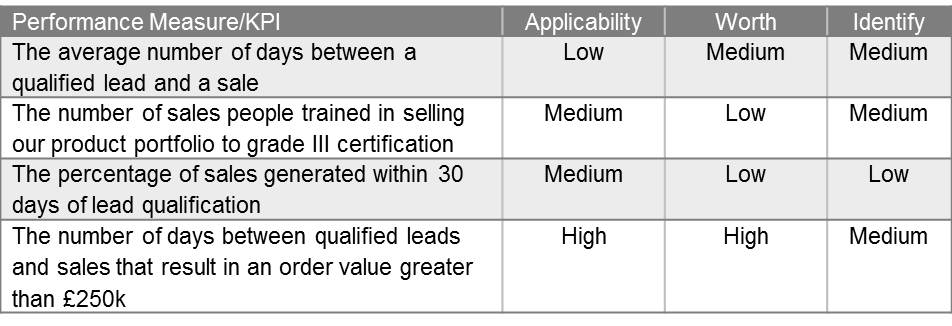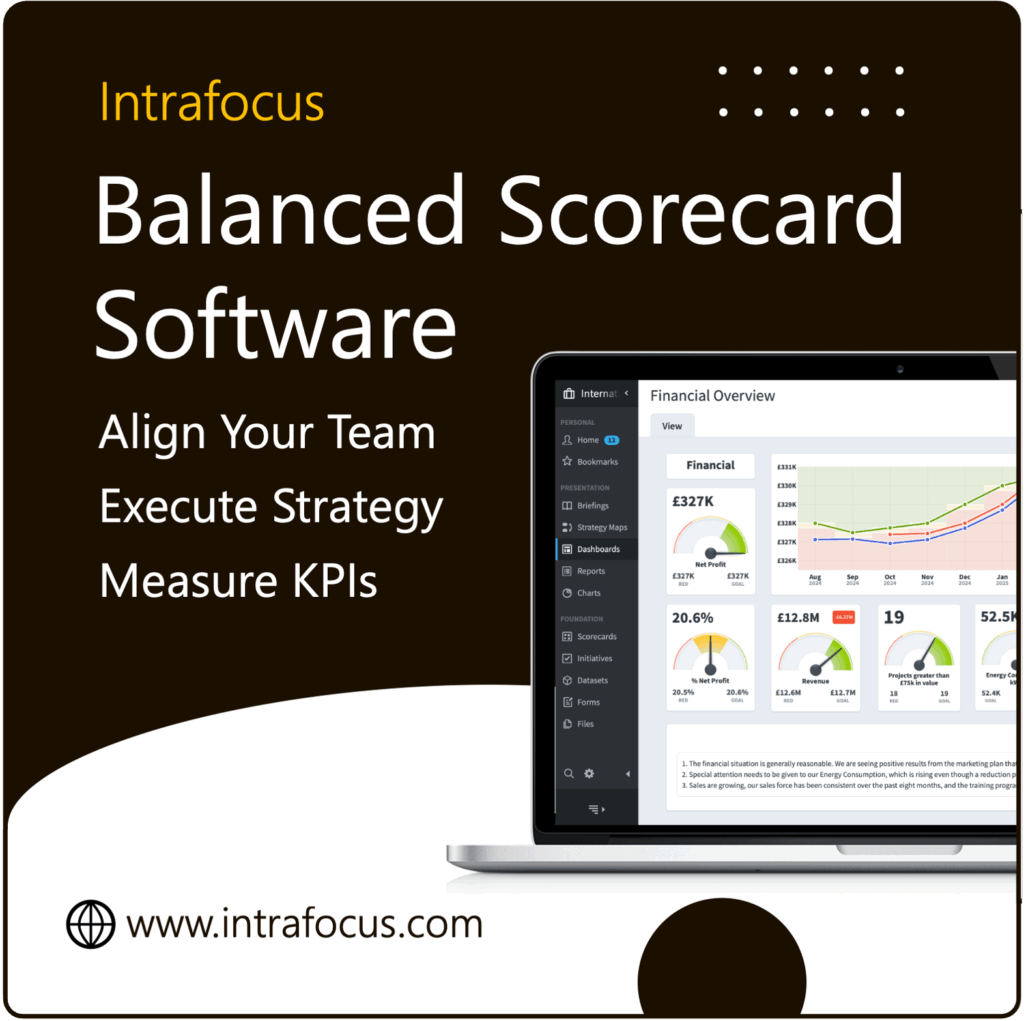Performance Measures – Part 2: A Key Performance Indicator (KPI) needs to be clearly defined, rated in terms of importance and assigned ownership. This week we will look at deciding how important a KPI is.
Time and effort should be put into rating performance measures. It is important to ensure the right things are measured. A relatively simple process can be used to build a decision matrix around:
- How applicable the measure is to a related business objective
- The relative worth of each measure, do you really need to know
- The ease by which data can be found to make the measurement
For each KPI ask the three questions above and rate them High Medium or Low. As a guide the use the following:
For Applicability:
- High – This measure will provide enough information to determine whether or not we are achieving this business objective
- Medium – This measure will provide enough information to make an informed decision as to whether or not the business objective has been met, provided it is augmented with some additional information or another measure
- Low – This measure will not provide very much information at all and at best will allow us to make a reasonable guess
For Relative Worth
High – This measure is really important to the business because it; 1. Is a top-line indicator e.g. Profit or 2. Is important to our shareholder/stakeholders regardless of its association with any business objectives
Medium – This measure is not specifically associated with any business objectives but it can/does contribute to the effectiveness of other KPIs
Low – This measure has been asked for but does not significantly contribute to very much
For Ease of Identification
- High – This measure is already available in existing data systems or can be calculated easily from existing information in existing data systems
- Medium – This measure does not exist and would require a new process to be put in place to collect the information. The task would not be onerous and would be worth the effort
- Low – This measure does not exist and would require a significant change to working practices that would seem unreasonable at this time
The matrix for a few sample KPIs might end up looking something like this:
The immediate result of creating a matrix such as the one above is the ability to exclude measures quickly. For example, we can see that the first measure has a low Applicability rating. In general all Low applicability rated measures would be discounted. The only time this might not be the case would be when there was pressure from stakeholders (High worth) to include a measure. The two Low ratings on the third measure also indicate that this measure should be discarded.
The exercise has to be gone through and it is essential that there is general agreement, but at the end of the day someone will have to make a decision based on the needs of the business. The table above should provide some supporting evidence that the correct process has been gone through to choose one measure over another, however, the important thing is to get agreement that a rational choice has been made. Using one of our examples above, you could imagine the rationalisation behind a decision could go something like this:
Performance Measure/KPI:
- The average number of days between qualified leads and sales that result in an order value greater than £250k
Rationalisation
- 80% of our business comes from projects greater than £250k, these customers are important to us. In general, the remaining 20% are very small customers and tend not to lead to larger sales. This together with the difficulty in tracking sales to very small customers means we should count the lead to sale conversion for our high-end customers”
The above should provide the basis for focused effort and most importantly generate the right levels of discussion to ultimately gain agreement from all parties as to the inclusion/exclusion of KPIs for the business.
Part 3 will concentrate on assigning ownership to you KPIs. Check out KPI Training for more information on developing successful performance measures/KPIs.
end of Performance Measures – Part 2




